Stone Grandfather Restaurant (돌하르방)
16.0Km 2020-05-29
300, Hallim-ro, Jeju-si, Jeju-do
+82-64-796-0001
Located in Jaeam Folk Village (Hallim Park), the restaurant is spacious and is well known for its traditional local dishes such as charcoal-grilled Jeju pork, seafood and mung bean pancake, nutritious sea urchin soup, and jopssalju (Jeju-style wine made of millet and yeast). It also serves cold herb naengmyeon in the summer and pheasant buckwheat kalguksu (knife-cut noodles) and a local dish called pheasant bingtteok in winter.
Oreve Hot Spring & Spa (오레브핫스프링앤스파)
16.0Km 2024-08-13
152 Taepyeong-ro, Seogwipo-si, Jeju-do
Oreve Hot Spring & Spa is the only restorative hot springs in Jeju, featuring ocean views while relaxing. The spa includes multiple themed saunas and pools. The amenities make a visit here even more relaxing.
JW Marriott Jeju Resort & Spa (JW 메리어트 제주 리조트 & 스파)
16.0Km 2025-09-10
152 Taepyeong-ro, Seogwipo-si, Jeju-do
JW Marriott Jeju Resort & Spa, facing the sea off Jeju, is 50 minutes from Jeju International Airport. Its proximity to Seogwipo Maeil Olle Market and natural attractions, including Sanbangsan Mountain and Seongsan Ilchulbong Tuff Cone, makes it an ideal place to enjoy some leisure time. Have a relaxed morning with the hotel's signature Brunch Royale, at the all-day dining restaurant, Island Kitchen. You can also enjoy an afternoon tea set at The Lounge. The Flying Hog offers Jeju-style wood-fired grilled dishes in a fine dining setting. Facials and deep-tissue massages are available at SPA by JW. There are four indoor and outdoor pools, including an infinity pool offering wellness experiences. The Family Club guarantees joyful moments with kids, offering various kid's activity programs. If you are planning a flawless business event or a destination wedding, the hotel's indoor and outdoor event spaces, offering customized catering services, are a perfect choice. You can select either Korean or Western-style menus. Additionally, you can relax in a cozy guest room with an LED TV, a minibar, a marble bathtub, and free Wi-Fi. Most rooms have a balcony offering breathtaking ocean views.
Jeju Island Special Tourist Zone (제주도 관광특구)
16.0Km 2025-05-20
Jeju-do
+82-64-740-6000
Located to the southwest of the Korean Peninsula, the island of Jeju is Korea's largest tourist destination. The entire island has been designated as a special tourist zone, and it's easy to see why: there is hardly any spot on the island that is not photogenic. Unlike mainland Korea, which has a temperate climate, Jeju boasts a climate that is closer to subtropical. Hallasan Mountain, lying at the center of the island, is surrounded by 368 parasitic cones, known as "Oreum." Eleven beaches have been designated as tourist beaches, but including those that are not officially designated, the island features nearly thirty beaches in total. Famous beaches include Iho Tewoo Beach, Samyang Beach, Hyeopjae Beach, Geumneung Beach, and Gwakji Beach. Jeju's renowned Olle Trails, a system of hiking paths, span a total length of 425 kilometers and would take about fifteen days to complete in their entirety.
Hallasan Mountain [National Geopark] (한라산 (제주도 국가지질공원))
16.0Km 2024-12-03
2070-61 1100-ro, Jeju-si, Jeju-do
+82-64-710-3945
Hallasan Mountain stands proudly at the center of Jeju Island and is perhaps the island’s most memorable landmark. Also called Yeongjusan Mountain, meaning "mountain high enough to pull the galaxy," Hallasan Mountain is widely known by scientists for its geological value. Designated as a national park in 1970, there are 368 parasitic cones called "oreum" (Jeju dialect meaning peak) around the main mountain.
Hallasan Mountain is famous for its vertical ecosystem of plants that results from the varying temperatures along the mountainside. Over 1,800 kinds of plants and 4,000 species of animals (3,300 species of insects) have been identified; to explore the mountain's treasures, simply follow one of the well-developed hiking trails.
Hallasan Mountain Trekking (한라산 트레킹)
16.0Km 2020-06-25
2070-61, 1100-ro, Jeju-si, Jeju-do
+82-64-740-6000
Situated on the southern tip of the Korean Peninsula, Hallasan is 1,950 meters in x_height and is the highest mountain in South Korea. Formed from volcanic activity, the mountain is a dormant volcano made mostly of basalt. Home to the magnificent Baekrokdam (lake-filled crater), the mountainside is covered with alpine flora and lush trees.
The mountain is characterized by majestic cliffs, steep slopes, interesting rock formations, and, in particular, myriads of colorful azaleas. There are over 360 small mountains (uniquely-shaped volcanic mountains called “Oreum” in Jeju dialect) surrounding Halla Mountain that offer new delights to visitors with the coming of each new season. Along with Hallasan, the oreums were officially named the Hallasan Natural Protection Area (Natural Monument No.12) in 1966.
There are six hiking trails along Hallasan. Seongpanak Trail on the east and Gwaneumsa Trail in the north go all the way up to the summit (Baekrokdam). Those looking for a less rigorous hike are advised to take the shorter trails reaching midway up the mountain. All trails are relatively short (less than 10 kilometers) and can be hiked in less than a day. Visitors are advised, however, to start early in the morning if planning on hiking up to the summit and to check official operating hours, as some trails are only open during certain hours of the day. Keep reading for information on some of the most popular trails.
* Gwaneumsa Trail (North)—Summit Trail
Gwaneumsa Trail offers hikers the best view of Hallasan’s deep valleys and stunning terrain. Midway along the trail is Guringul (a lava cave) and Tamna Valley. Tamna Valley is especially beautiful during the fall when the leaves are changing and during the winter when the entire area lays under a dusting of snow.
* Seongpanak Trail (East)—Summit Trail
This relatively long, gently sloping trail is perfect for beginners. Lush broadleaf trees give shade from the beating sun and in spring the azaleas bloom and turn the mountainside into a dazzling array of color.
* Eorimok Trail (Northwest)
This short trail is another relatively easy trail for beginners. In spring, the nearby meadows are adorned with red royal azaleas. From the stone pathway to Mansedongsan visitors can catch a breathtaking panoramic view of the countryside and the island’s signature Oreums.
* Yeongsil Trail (Southwest)
As the shortest trail in Hallasan, this trail boasts Yeongsilgiam (a spectacular cliff with series of unusual rock formations). It is covered with azaleas and royal azaleas in spring and vibrant autumn foliage starting in October.
Gapado Island (가파도)
16.1Km 2025-03-31
Gapa-ro, Daejeong-eup, Seogwipo-si, Jeju-do
+82-64-794-7130
Gapado Island is Jeju's fourth largest island, located off the southwestern coast. The island is said to look like a ray swimming in the waves, giving the island its name. A bicycle rental shop is located right at the harbor, allowing visitors to tour the entire island in 1-2 hours. The best time to visit Gapado Island is in April and May, when the barley is ripe. During this time, the island holds the annual Green Barley Festival, with plenty of fun events related to this local harvest.
Baengnokdam Lake (한라산 백록담)
16.1Km 2022-07-13
Topyeong-dong, Seogwipo-si, Jejudo
+82-64-713-9950
Baengnokdam is a crater lake that sits on top of Hallasan Mountain at the center of Jeju Island. It spans 3 kilometers in circumference and 500 meters in diameter, and is surrounded by approximately 360 parasitic cones. At the peak, visitors can feel like floating on clouds.
Olive Young - Jeju Hyeopjae Branch [Tax Refund Shop] (올리브영 제주협재점)
16.2Km 2024-06-27
336, Hallim-ro, Hallim-eup, Jeju-si, Jeju-do
-
Geumneung Beach (금능해수욕장)
16.2Km 2024-07-17
119-10 Geumneung-gil, Hallim-eup, Jeju-si, Jeju-do
+82-64-728-3983
Clear waters, a beautiful beach with white sand and seashells, fantastic sunset, and the view of Biyangdo Island beyond sum up to describe Geumneung Beach. The white sandy beach where the bottom of the shallow, blue water is clearly seen creates an illusion that one can easily walk all the way to Biyangdo.
Geumneung Beach is directly connected to Hyeopjae Beach, another popular tourist spot on the west side of Jeju Island. However, despite the common charming elements the two beaches share, Geumneung Beach sees a relatively small number of visitors in comparison, so it exudes a more relaxing vibe. Moreover, the beach and the parking lot are directly connected, making it more convenient to move baggage and other belongings. The newly built showers supply warm water, which is another advantge of the beach.
It is recommended to visit the beach during the hours of ebb tide. Once the sea water recedes afar, a vast, beautiful sandy beach appears. The water is shallow in many parts where natural swimming pools are formed, allowing little children to be able to play safely.
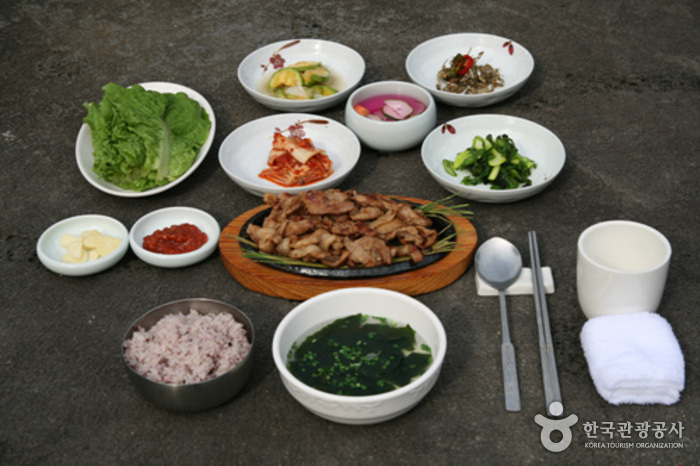
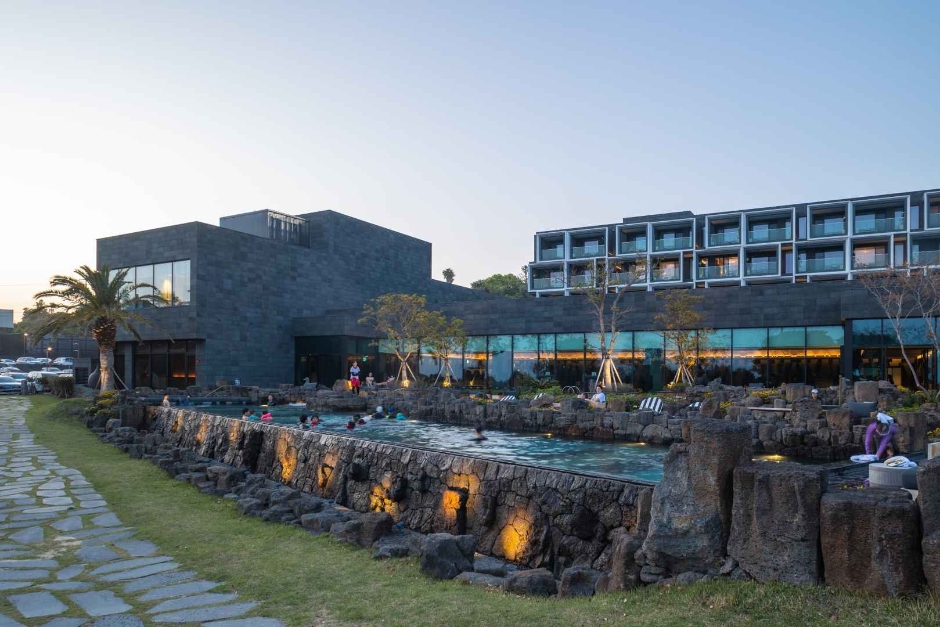
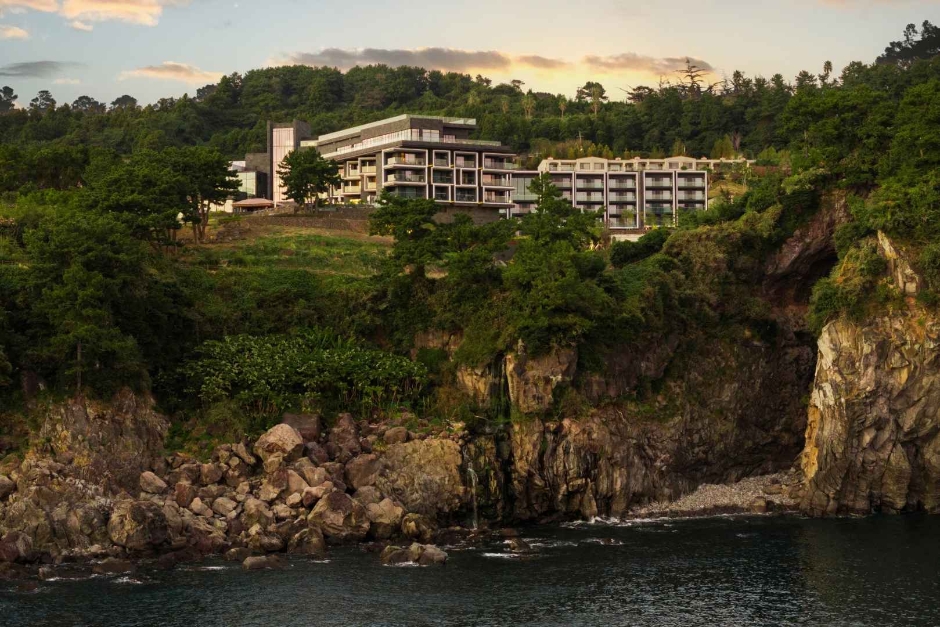
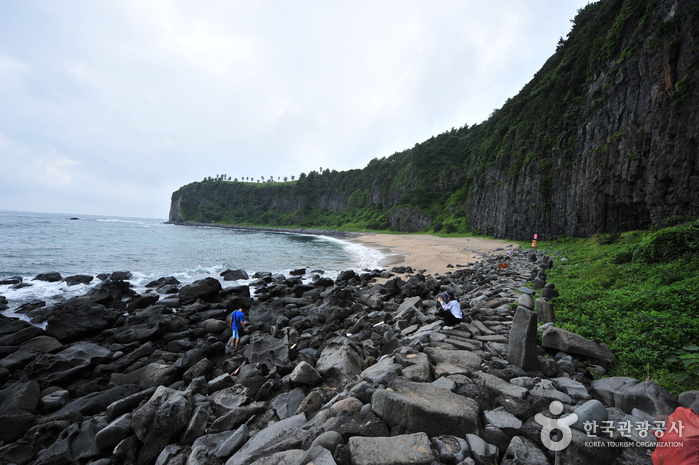
![Hallasan Mountain [National Geopark] (한라산 (제주도 국가지질공원))](http://tong.visitkorea.or.kr/cms/resource/98/2870098_image2_1.jpg)
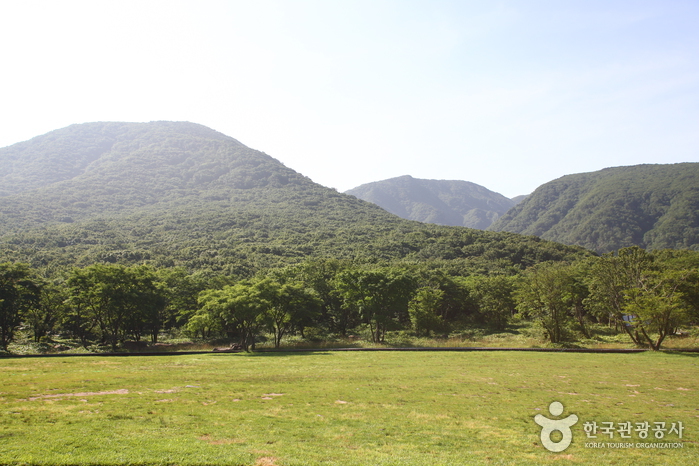


 English
English
 한국어
한국어 日本語
日本語 中文(简体)
中文(简体) Deutsch
Deutsch Français
Français Español
Español Русский
Русский